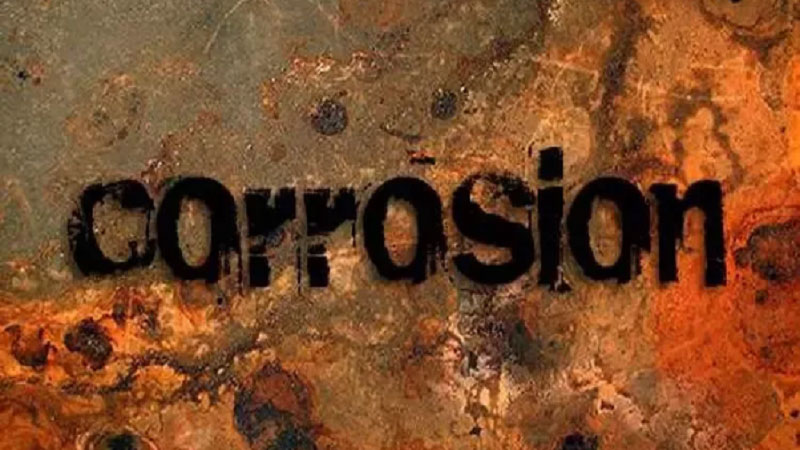
Corrosion: Can it Be Controlled?
As complicated as it sounds, controlling corrosion isn't much more complex than controlling the heat in your home. Do you doubt it?
How Corrosion Works
Rust (corrosion) is a natural phenomenon occurring in the great majority of metals known today. Corrosion is created as a result of an electrochemical reaction between metal & an oxidant resulting in loss of electrons from the metal acting as a cathode. This electron loss is caused by a difference in galvanic potential, which can be caused by several factors.
All these scientific words seem very complex. Let's turn it all into a straightforward example:
When you are lying down and want to get up, energy needs to be deployed. By standing, your body gets tired and, after a while, you will want to get back to your original position (lying down). Just like processed metals, you gradually lose energy and slowly return to your baseline state.
On the other hand, if you stay lying down, no energy is deployed. In the same vein, crutches could allow you to stay on your feet all the time without ever losing energy. In both cases, no power is expended, which means that there is no reaction (loss of energy).
Like you, metals often change shape to meet specific requirements. Take a car as an example. To obtain the desired shape, the metals are heated, transformed, folded, cut, etc. All these manipulations ensure that this metal is no longer in its original state. Let's see it all as energy transmitted to it. Suppose the metal in question does not have energy initially, and these transformations provide it. In that case, this energy will eventually be lost over time until it returns to its initial energy level of zero. This loss of power is the result of corrosion (rust). Thanks to corrosion, a metal gradually returns to its original state.
Returning to the example of crutches, metals having access to an external energy source will not change in nature when transformed since they will not lose energy (electrons).
Different Types of Corrosion
There are several different types of corrosion. They may occur from excessive dust, moisture, oxygen, or water in the environment.
Common forms of corrosion are:
1. Dissimilar metal or galvanic corrosion
2. Stress cracking corrosion (SCC)
3. General corrosion
4. Localized corrosion
5. Caustic agent corrosion
6. Flow-Assisted Corrosion
7. Intergranular corrosion
8. De-Alloying
9. Fretting corrosion
10. High-temperature corrosion
11. Crevice Corrosion
12. Pitting Corrosion
13. Uniform corrosion
Main causes of corrosion
The contact of the metallic material with oxygen and humidity produces a complex electrochemical phenomenon. The presence of water in the environment causes corrosion, while the reaction of metals with air is the cause of oxidation. In metallic materials, the most common corrosion is generated by a chemical reaction in which electrons are transferred from one material to another. We can say that oxidation is the attack of oxygen (in the form of air or water), and corrosion is the deterioration that it causes.
But, in addition to humidity, there are other corrosive agents: this is the case of high temperatures, the environmental salinity typical of being close to the sea, and industrial pollution with concentrated sulfur dioxide.
Depending on the type of metal and environmental conditions, the form and speed at which corrosion occurs will vary. Almost all metals can suffer it, although ferric metals are the best known as they are the most frequent and quick to produce. For their part, precious metals, having very little reactivity, are challenging to corrode, although their scarcity and high price do not make them a material widely used in industry.
The factors that most influence the triggering of a corrosion process are the following:
- The acidity of the solution: the most acidic are the most corrosive, above neutral and alkaline, since they allow a greater reaction in the anode zone.
- Dissolved salts: the presence of acid salts accelerates the corrosion process. For their part, alkaline ones can inhibit the process.
- Protective layers: their existence can limit the appearance of corrosion, whether they are coatings applied on the material or layers resulting from passivation.
- The oxygen concentration: depending on the material, the amount of oxygen present can affect the corrosive process. In ferric metals, the higher the amount of oxygen, the faster the corrosion. However, in passivated materials, it serves to enhance the protective layer.
- Temperature: the rate of deterioration tends to increase at higher temperatures, which most influences oxidation corrosion.
Avoid corrosion by utilizing products from Chaudhary Chemitreat!!
Chaudhary Chemitreat builds high-quality products that control corrosion and increase your building's or construction's durability, uniqueness, and longevity.
- Our FRP lining is used in various applications, including leak proofing rooftops, tank covering in chemical industries, and anti-corrosion of metal tanks.
- We offer the highest quality Quartz powder: Impurity-free, longer shelf life, and precise composition.
- A high-quality graphite tiles with sufficient compressive strength and reliability.
To know more about our products, visit Chaudhary Chemitreat Engineers, a leading Acid Proofing Solutions provider.